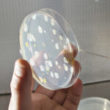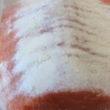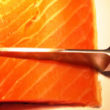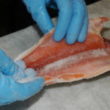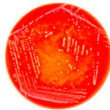Worth knowing about listeria

Listeria monocytogenes (listeria) is among the bacteria that pose the greatest challenge to both Norwegian and international food production. This bacteria can cause serious illness and death from the consumption of infected food and give rise to major economic consequences for individual companies and industries.
Worth knowing
Facts
Brief information about listeria
- Listeria consists of several species, where Listeria monocytogenes is the one that causes disease in humans.
- Listeria monocytogenes (listeria) is among the foodborne bacteria that constitutes the greatest burden, both health-wise and economically for actors in the food chain.
Listeria in food production
- Getting rid of listeria can be difficult if it enters facilities where food is produced, and listeria can infect food during production.
- Listeria can even grow during cold storage. It survives and grows at high salt concentrations, and can survive drying and freezing. Listeria is killed by heat treatment (pasteurisation).
- Products at risk of infection from listeria are primarily long-lasting, cold-stored, ready-to-eat products that are eaten without heat treatment, such as smoked salmon, soft cheeses, cold cuts of meat and some types of fruit and vegetables.
Disease resulting from listeria
- Most people occasionally eat food contaminated with listeria without getting sick.
- Infection from the listeria bacterium can result in everything from no or flu-like symptoms, to severe illness (listeriosis) with symptoms such as meningitis and sepsis.
- Special risk groups are people with a weakened immune system, the elderly over 65 years of age and pregnant women and their foetuses.
- Of those people who actually get sick with listeriosis, 15-20 percent die.
A wide range of measures throughout the entire food chain is necessary to be able to produce and consume food that is as safe as possible, thereby reducing the challenges resulting from the occurrence of listeria related to food production. This includes measures such as better analytical methods for detecting listeria outbreaks, preventing listeria from entering the production environment, monitoring listeria in the production environment, reducing bacterial flora including listeria on raw produce, improving packaging, securing cold chains when storing food in order to create poorer growing conditions for listeria bacteria and better methods to combat listeria bacteria in production environments.
For more than 20 years, Nofima has conducted a number of projects and activities together with the Norwegian and international food industry with the aim of mapping paths of infection, understanding why listeria establishes itself, and developing methods to control listeria bacteria if contamination has occurred.
Methods for detection and mapping of listeria
Food manufacturers are required to have a listeria monitoring programme in accordance with the Food Hygiene Regulations, but there are challenges associated with current methods as these are very time-consuming with approximately two days before the final test results are available. This waiting period can be problematic as it limits the ability of manufacturers to implement rapid measures against a listeria outbreak in a facility and prevent products with listeria from reaching the market.
Nofima has conducted several projects that have provided insight into paths of infection, niches where listeria establishes itself and the types of listeria that exist in the industry. The projects have also assessed risk factors for listeria in food production and have assessed alternative and more efficient sampling and analysis methods.
Nofima’s projects and results on detection and mapping of listeria
Methods and technologies for the control of listeria in food
It is not possible to guarantee that there is no listeria in foods eaten without heat treatment, such as rakfisk, smoked salmon, soft cheeses and cold cuts of meat. To ensure safe products for consumers, it is important to kill listeria and/or keep levels low enough throughout their shelf life. This means that listeria bacteria do not reach a number that poses a food safety risk.
There is no standard practice on how to get rid of or prevent the occurrence of listeria in food. Different measures will be necessary in different situations, and depend on the raw produce and the degree of processing. In addition, it will often require measures at several stages, and the control of raw produce, recipe, process, product, cold chain, shelf life and cleaning.
Taking general preventive measures can reduce the general bacterial flora, and thus listeria. For products with a long shelf life, heat treatment is a sure way to kill listeria. However, there are also a number of other methods and technologies such as high-pressure processing, microwave treatment, UV light, antimicrobial components, and organic acids that kill or inhibit listeria to varying degrees. These can be used alone or in combinations. It is important to gain knowledge about what works against listeria, as not all methods and technologies are equally suitable for all types of raw produce and foodstuffs. In recent years, Nofima has worked on this in several projects, and has also focused on how quality and shelf life may be affected. This type of research is important for the industry so that they can assess for themselves which methods and technologies may be relevant for their products.
Nofima’s projects and results on control of listeria in food
What can consumers do to avoid getting sick from listeria in their food?
Listeria is particularly a problem in cold-stored products with a long shelf life because the bacterium has time to grow into numbers that can make people sick. The main products at risk of infection from listeria are ready-to-eat products such as cold smoked fish, rakfisk, cold cuts of meat, salad ham/chicken (except those containing preservatives), cut fruit and soft cheese. These products are often labelled with a ‘use by’ date.
In the period 2017-2023, Nofima led a major EU project called ‘SafeConsume’, with the aim of updating food safety advice to consumers. It is important to store products at risk of infection from listeria in a refrigerator at the correct temperature (4°C or lower). One important result of this project was that most people trust their refrigerators, but that many refrigerators cannot be trusted. Therefore, it is necessary to monitor the temperature with a thermometer. Another important result was that many people eat foods at risk of infection from listeria after their shelf life has expired.
The research resulted in these three pieces of advice to avoid getting sick from listeria:
- Store ready-to-eat food in a refrigerator (below 4°C).
- Buy and eat ready-to-eat food before the expiry date
- Cook ready-made meals (e.g. sausages and hamburgers) according to the label instructions.
